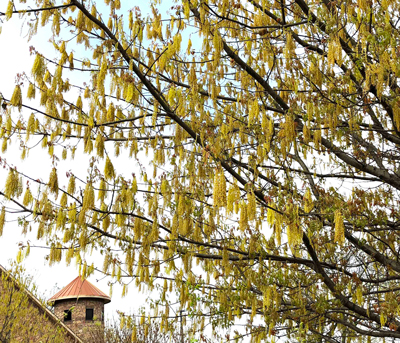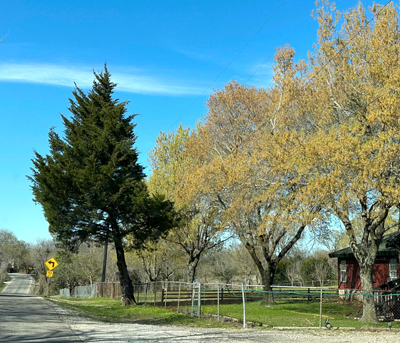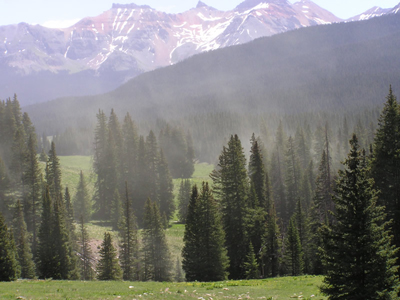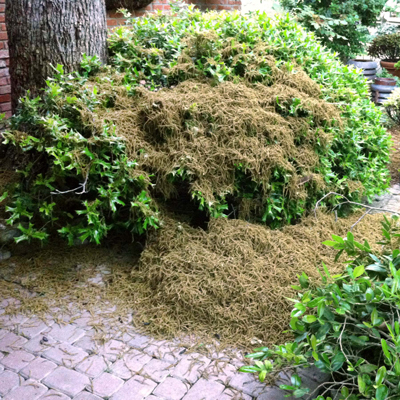Pollen by the Pound

Those talks about “the birds and the bees” never include mention of the wind, but it’s the source of pollination for 12 percent of the world’s flowering plants according to the USDA.
Since the Grass Family is all wind-pollinated, and since it’s the largest plant family in the world, that stat seems a bit on the shy side, but who am I to argue with the federal government.
Included in the grasses (beyond Johnsongrass and bermudagrass), we have millions of acres of wheat, corn, rice and oats. All wind-driven pollen.
And beyond grasses we get into conifers – those plants that bear their fruit in cones. Pines, firs, spruces, cypresses and our local nemeses, the eastern redcedars and mountain cedars in the genus Juniperus. My wife and I live surrounded by acres of eastern redcedars, and every December we begin our “bronze watch.” As the trees take on the coppery color of pollen sacs we know that her agonies are on the horizon. Thank heavens for allergists and allergy meds.

Nut trees are generally pollinated by wind. In our rural countryside the oaks come first. Their nuts are called acorns, and they are preceded by pollen-dropping catkins that have been hanging from trees the past week or two (earlier in South Texas). What one might have mistaken for Panhandle dust was really sticky pollen on the flat surfaces of our cars and trucks.

Then, a few weeks later, pecans come into bloom. They, too, have catkins producing pollen that can be carried for great distances by wind. This is precisely why you don’t want to plant pecans expecting to get the same variety as the mother tree. You know the genetics of Mama that produced the pecan, but you know nothing about the male parent. You will have nothing more than a “native” pecan.

Finally, there are some broadleafed plants that are pollinated by wind. They generally lack showy flowers (no need to attract bees or hummingbirds). Ragweed is the prototype. These plants seldom have fragrance. Most have single-seeded fruit such as oaks, pecans and cottonwood.
If you, like my wife and I, find yourself bothered by headaches, itchy eyes, runny noses or sneezing at the same particular time every year, suspect allergies and talk to a really good allergist. Relief is available. There is no need to suffer.
